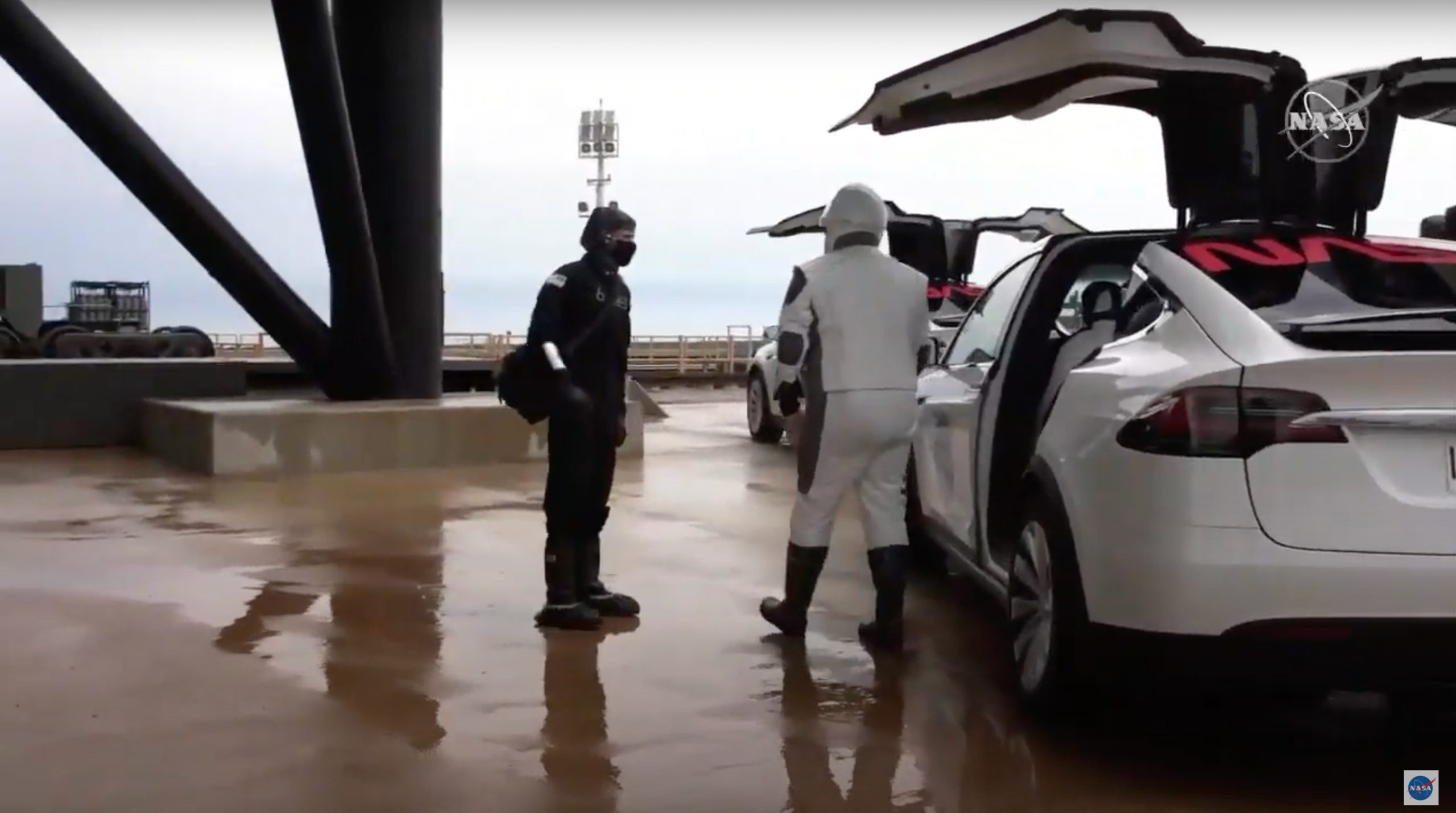
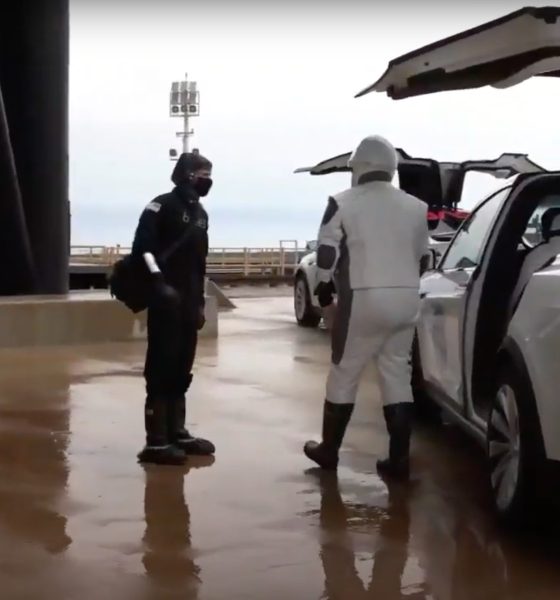
News
SpaceX, NASA already planning its next astronaut mission following historic launch
SpaceX’s first launch of Crew Dragon with astronauts on board may have to wait a few more days to get off the ground, but that doesn’t mean that the company isn’t already looking forward to the future. Following Demo-2, and if all goes as planned, NASA is expected to certify the Crew Dragon spacecraft for regular flights to and from the space station.
At that time, SpaceX and NASA will start nailing down the details for its next crewed mission. Each Dragon spacecraft is certified to stay on orbit for no more than 120 days, so they have to time everything carefully. That’s why the length of Demo-2 is uncertain — it all depends on when the next spacecraft will be ready.
That could happen sooner rather than later. NASA administrator, Jim Bridenstine, explained during a pre-launch briefing that the next flight of the Crew Dragon could fly as soon as August 30. That flight, called Crew-1, would see the Dragon carry four astronauts to the space station for a six-month stay. On board will be three NASA astronauts — Mike Hopkins, Victor Glover, and Shannon Walker — who will be joined by Japanese astronaut Soichi Noguchi.
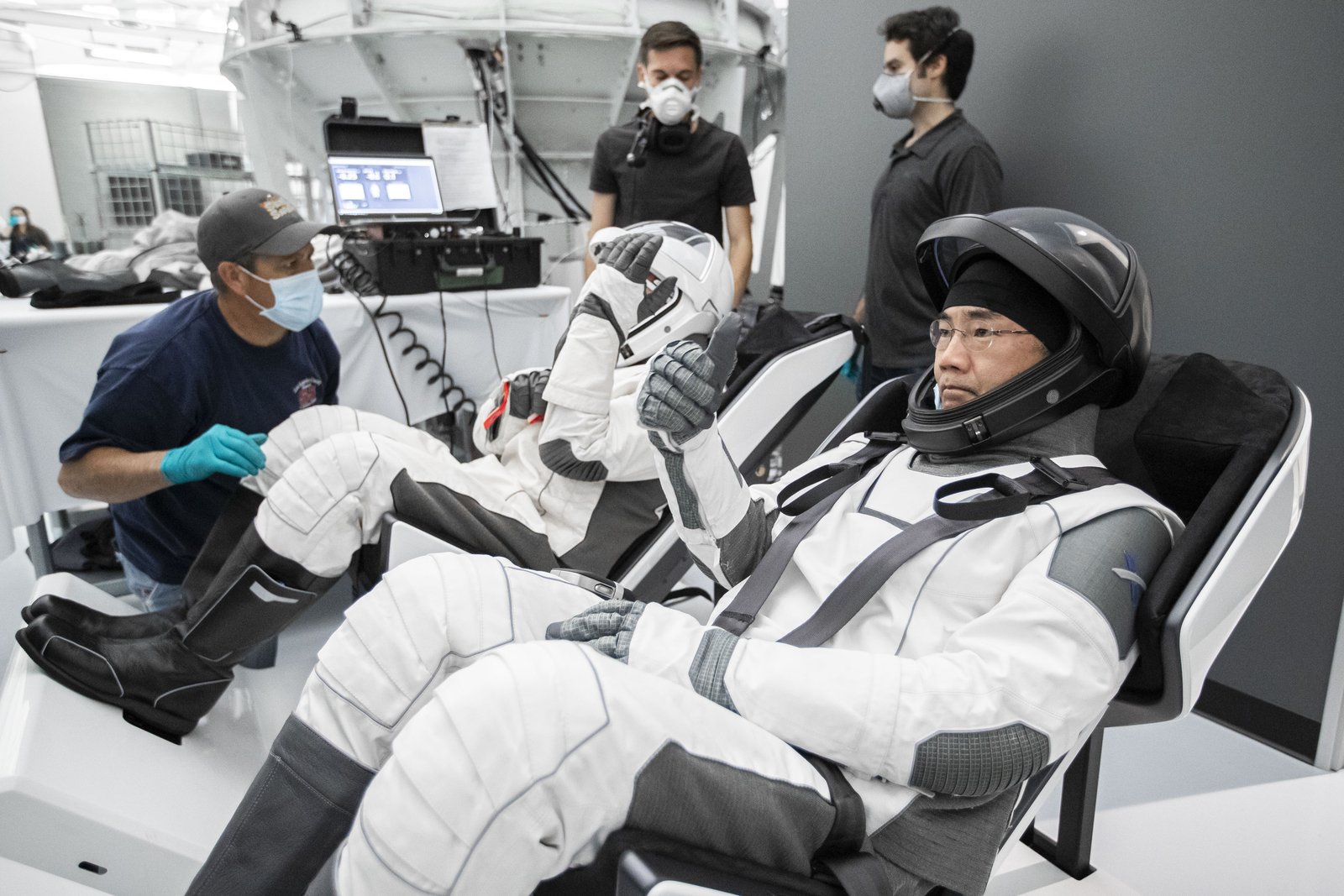
However, before they can fly, the Demo-2 crew of Doug Hurley and Bob Behnken are putting the Dragon through its paces. It’s their job to test out the craft’s various systems on this final test flight. Crew Dragon has already made one successful flight to the space station, but that was without a crew on board. When it flies this next time, Bob and Doug will not only test out manual controls of the Dragon’s flight systems, but also the craft’s ECLISS (or environmental control and life support system).
Bridenstine stresses that Demo-2 is a test flight. The mission is designed to test the vehicle, land it safely, and prepare to regularly launch crew. To that end, there will be several weeks in between the Demo-2 flight and the launch of Crew-1. This will allow SpaceX and NASA to inspect and certify the Dragon.
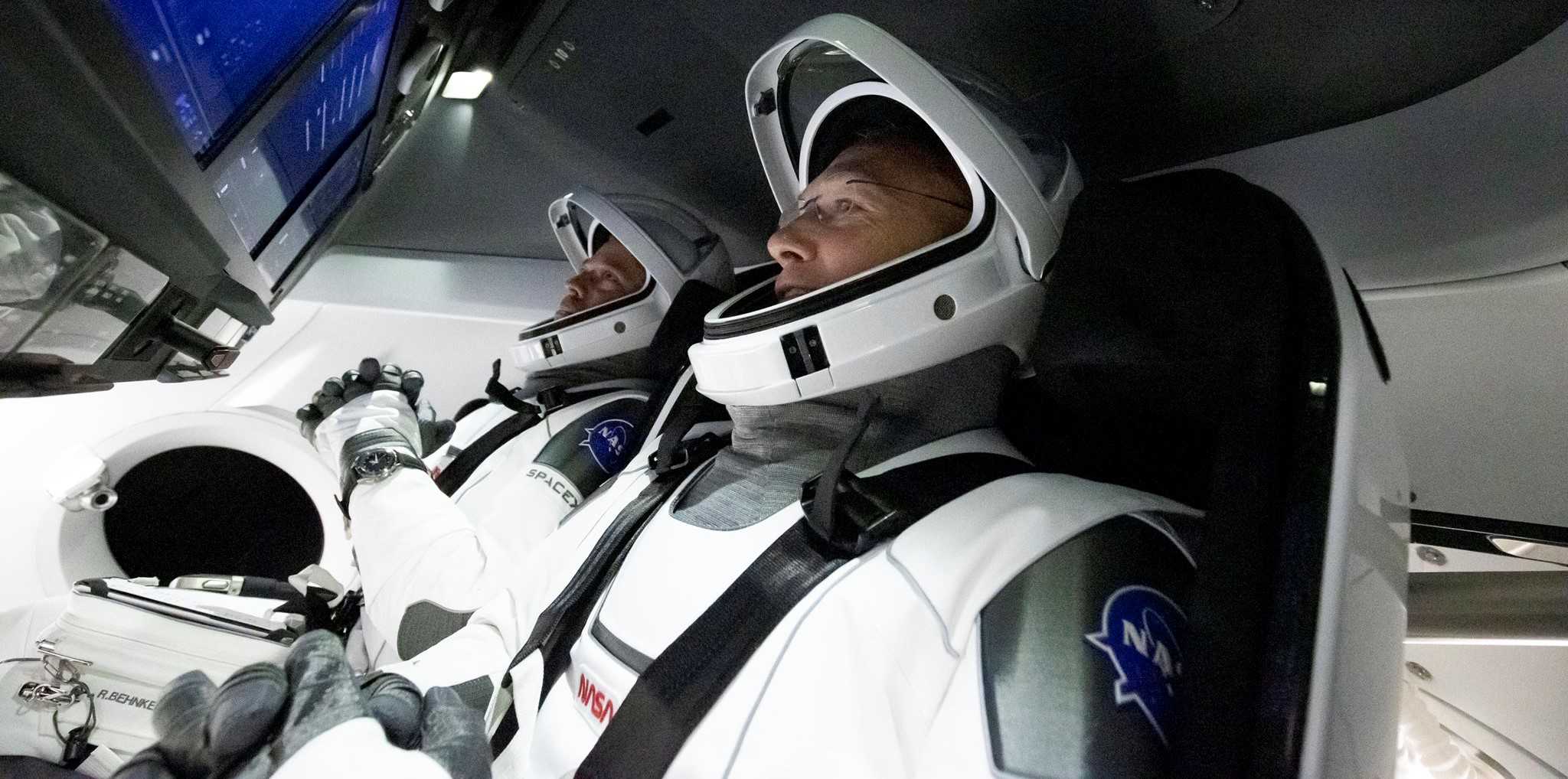
“They can be there probably until early August,” Bridenstine said, referring to the Demo-2 mission. “If we have a good window to come home and they are not necessary on the International Space Station, we will be taking it.”
“The goal is to get them to the International Space Station, test the systems and get them home,” he added. “If they can do more work than that while on the ISS, certainly that’s OK. But this is a test flight.”
Behnken and Hurley will be joining fellow NASA astronaut Chris Cassidy on station. Cassidy, along with two Russian cosmonauts, launched to the station in April. They’ve been serving as a skeleton crew, so the addition of two more astronauts will be welcomed.
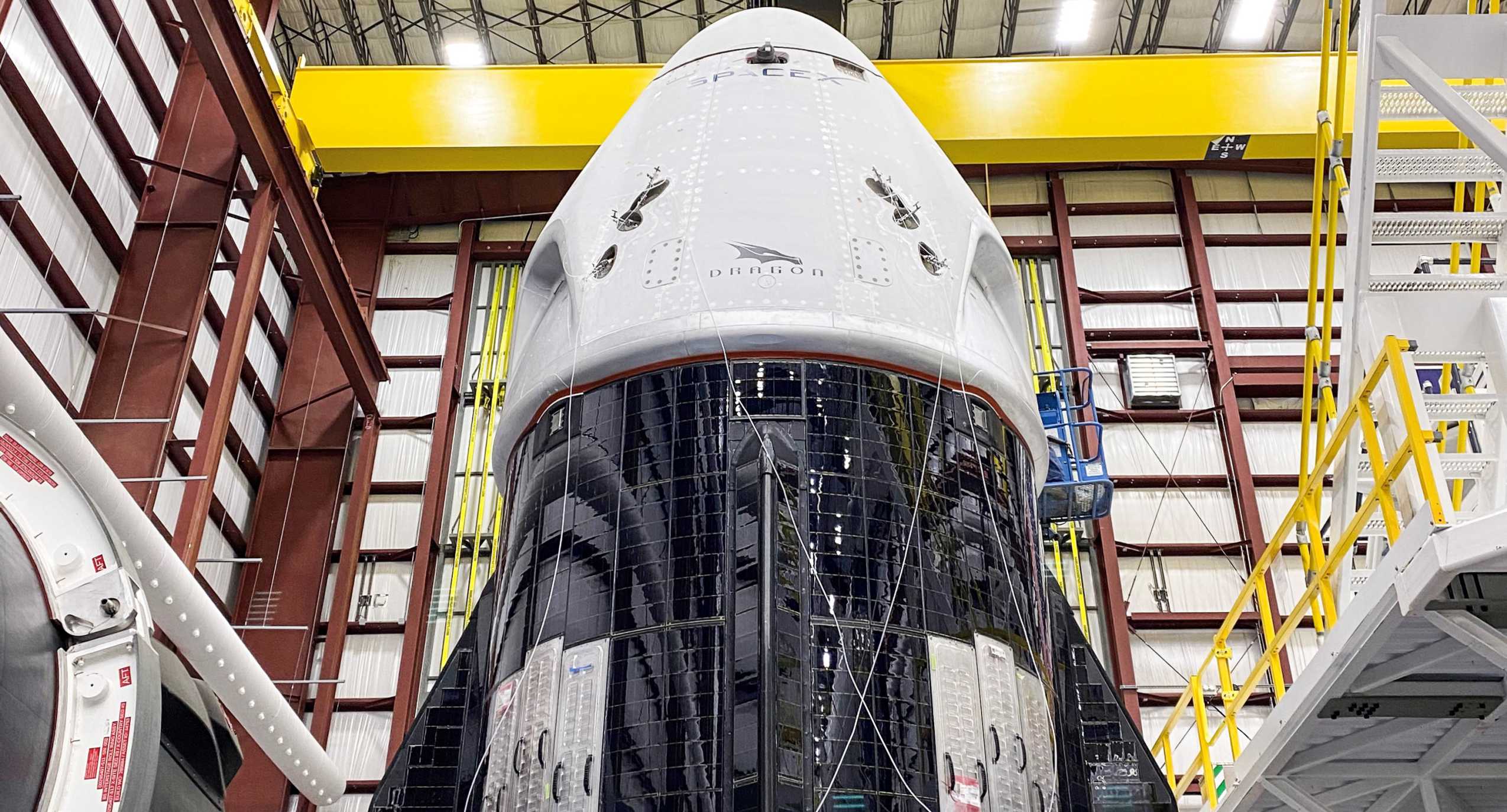
SpaceX snagged a $2.6 billion contract in 2014, to fly six operational crewed missions for NASA. For nearly a decade now, NASA has been forced to rely on Russia as the sole means of transporting astronauts to and from the orbital outpost. This arrangement is expensive, with seats now costing NASA approximately $90 million each.
Once Crew Dragon is fully operational, NASA hopes to end its payments to Russia. It would lie to establish a barter system for seats instead. NASA is hopeful that the Russians will want to fly on the Dragon and are wanting to trade seats with the Russians in the near future.
That arrangement would see U.S. astronauts continue to fly on Soyuz spacecrafts as well as Russian cosmonauts fly on U.S. spacecraft with no money being exchanged. Russian officials have said they would be open to putting cosmonauts on U.S. vehicles after they’ve been fully certified.

Russia as well as many international partners participated in the Dragon’s readiness review process along with NASA. The Dragon passed both its flight readiness review and launch readiness reviews with flying colors. Right now, the only thing standing in its way is launch weather.
Currently, NASA and SpaceX are targeting Saturday, May 30 at 3:22 p.m. for liftoff.

News
Tesla FSD fleet is nearing 7 billion total miles, including 2.5 billion city miles
As can be seen on Tesla’s official FSD webpage, vehicles equipped with the system have now navigated over 6.99 billion miles.

Tesla’s Full Self-Driving (Supervised) fleet is closing in on almost 7 billion total miles driven, as per data posted by the company on its official FSD webpage.
These figures hint at the massive scale of data fueling Tesla’s rapid FSD improvements, which have been quite notable as of late.
FSD mileage milestones
As can be seen on Tesla’s official FSD webpage, vehicles equipped with the system have now navigated over 6.99 billion miles. Tesla owner and avid FSD tester Whole Mars Catalog also shared a screenshot indicating that from the nearly 7 billion miles traveled by the FSD fleet, more than 2.5 billion miles were driven inside cities.
City miles are particularly valuable for complex urban scenarios like unprotected turns, pedestrian interactions, and traffic lights. This is also the difference-maker for FSD, as only complex solutions, such as Waymo’s self-driving taxis, operate similarly on inner-city streets. And even then, incidents such as the San Francisco blackouts have proven challenging for sensor-rich vehicles like Waymos.
Tesla’s data edge
Tesla has a number of advantages in the autonomous vehicle sector, one of which is the size of its fleet and the number of vehicles training FSD on real-world roads. Tesla’s nearly 7 billion FSD miles then allow the company to roll out updates that make its vehicles behave like they are being driven by experienced drivers, even if they are operating on their own.
So notable are Tesla’s improvements to FSD that NVIDIA Director of Robotics Jim Fan, after experiencing FSD v14, noted that the system is the first AI that passes what he described as a “Physical Turing Test.”
“Despite knowing exactly how robot learning works, I still find it magical watching the steering wheel turn by itself. First it feels surreal, next it becomes routine. Then, like the smartphone, taking it away actively hurts. This is how humanity gets rewired and glued to god-like technologies,” Fan wrote in a post on X.
News
Tesla starts showing how FSD will change lives in Europe
Local officials tested the system on narrow country roads and were impressed by FSD’s smooth, human-like driving, with some calling the service a game-changer for everyday life in areas that are far from urban centers.

Tesla has launched Europe’s first public shuttle service using Full Self-Driving (Supervised) in the rural Eifelkreis Bitburg-Prüm region of Germany, demonstrating how the technology can restore independence and mobility for people who struggle with limited transport options.
Local officials tested the system on narrow country roads and were impressed by FSD’s smooth, human-like driving, with some calling the service a game-changer for everyday life in areas that are far from urban centers.
Officials see real impact on rural residents
Arzfeld Mayor Johannes Kuhl and District Administrator Andreas Kruppert personally tested the Tesla shuttle service. This allowed them to see just how well FSD navigated winding lanes and rural roads confidently. Kruppert said, “Autonomous driving sounds like science fiction to many, but we simply see here that it works totally well in rural regions too.” Kuhl, for his part, also noted that FSD “feels like a very experienced driver.”
The pilot complements the area’s “Citizen Bus” program, which provides on-demand rides for elderly residents who can no longer drive themselves. Tesla Europe shared a video of a demonstration of the service, highlighting how FSD gives people their freedom back, even in places where public transport is not as prevalent.
What the Ministry for Economic Affairs and Transport says
Rhineland-Palatinate’s Minister Daniela Schmitt supported the project, praising the collaboration that made this “first of its kind in Europe” possible. As per the ministry, the rural rollout for the service shows FSD’s potential beyond major cities, and it delivers tangible benefits like grocery runs, doctor visits, and social connections for isolated residents.
“Reliable and flexible mobility is especially vital in rural areas. With the launch of a shuttle service using self-driving vehicles (FSD supervised) by Tesla in the Eifelkreis Bitburg-Prüm, an innovative pilot project is now getting underway that complements local community bus services. It is the first project of its kind in Europe.
“The result is a real gain for rural mobility: greater accessibility, more flexibility and tangible benefits for everyday life. A strong signal for innovation, cooperation and future-oriented mobility beyond urban centers,” the ministry wrote in a LinkedIn post.
News
Tesla China quietly posts Robotaxi-related job listing
Tesla China is currently seeking a Low Voltage Electrical Engineer to work on circuit board design for the company’s autonomous vehicles.

Tesla has posted a new job listing in Shanghai explicitly tied to its Robotaxi program, fueling speculation that the company is preparing to launch its dedicated autonomous ride-hailing service in China.
As noted in the listing, Tesla China is currently seeking a Low Voltage Electrical Engineer to work on circuit board design for the company’s autonomous vehicles.
Robotaxi-specific role
The listing, which was shared on social media platform X by industry watcher @tslaming, suggested that Tesla China is looking to fill the role urgently. The job listing itself specifically mentions that the person hired for the role will be working on the Low Voltage Hardware team, which would design the circuit boards that would serve as the nervous system of the Robotaxi.
Key tasks for the role, as indicated in the job listing, include collaboration with PCB layout, firmware, mechanical, program management, and validation teams, among other responsibilities. The role is based in Shanghai.
China Robotaxi launch
China represents a massive potential market for robotaxis, with its dense urban centers and supportive policies in select cities. Tesla has limited permission to roll out FSD in the country, though despite this, its vehicles have been hailed as among the best in the market when it comes to autonomous features. So far, at least, it appears that China supports Tesla’s FSD and Robotaxi rollout.
This was hinted at in November, when Tesla brought the Cybercab to the 8th China International Import Expo (CIIE) in Shanghai, marking the first time that the autonomous two-seater was brought to the Asia-Pacific region. The vehicle, despite not having a release date in China, received a significant amount of interest among the event’s attendees.








